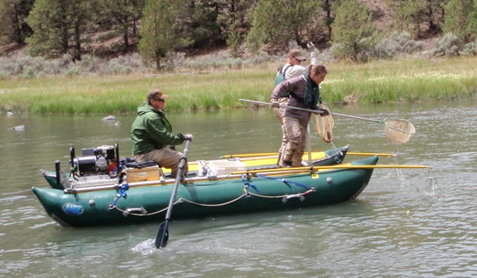
Almost every year the Oregon Department of Fish & Wildlife electrofishes the Crooked River to estimate redband trout and whitefish abundance. Following the very low flows on the Crooked River last fall, the results of the survey this spring were eagerly anticipated. The numbers were better than feared but showed a decline. Trout decreased by 20% from the prior year, mostly fish larger than 12″. Of course, larger fish are what anglers want to see. Additionally, the surviving larger fish had lower weights compared to the prior year indicating limited food availability. Fish can move to find survivable habitat much more successfully than macroinvertebrates, so it makes sense. Whitefish declined by about 50%. Plenty of anglers enjoy catching whitefish. Overall, the survey was bad news, but it could have been worse.
Here’s ODFW’s presentation to Central Oregon Flyfishers last week.
The graph on page 5 shows that the trout population is highly variable but is a little misleading. The peak years around 2014 are when thousands of steelhead fry were being planted in the river as part of the anadromous fish reintroduction program. The hypothesis is that many of these fry stayed in the river rather than migrate to the ocean (they ” residualized”). As you know, redband trout and native steelhead are essentially genetically identical and distinguishing a redband from a residualized steelhead based on quick visual inspection is impossible.
Slides 6 through 14 use millimeters as the unit of measurement. 12″ is about 305mm. Be sure to look at the dates on the slides, some show data from June 2022, others add October 2022, and some add June 2023. Slide 8 shows all 3 years and graphically illustrates the decline in larger trout this year. Slide 14 shows the drop in weight in larger trout this year compared to last year. Weights are not taken for whitefish.
